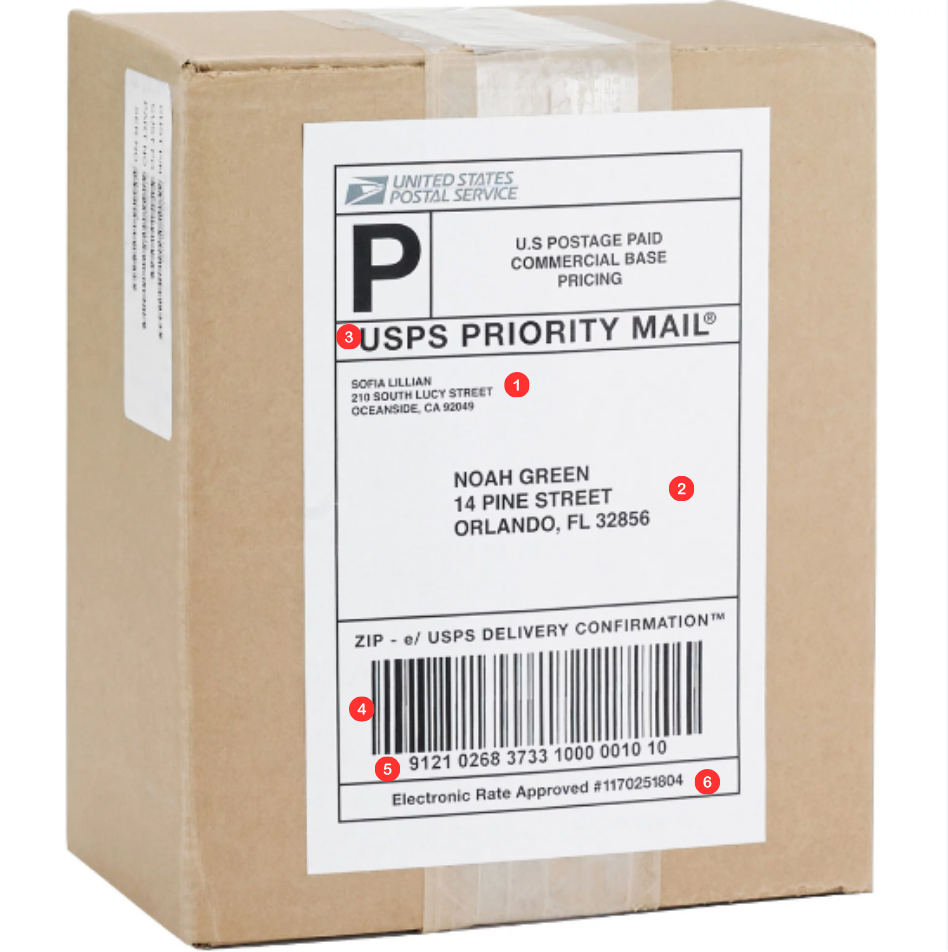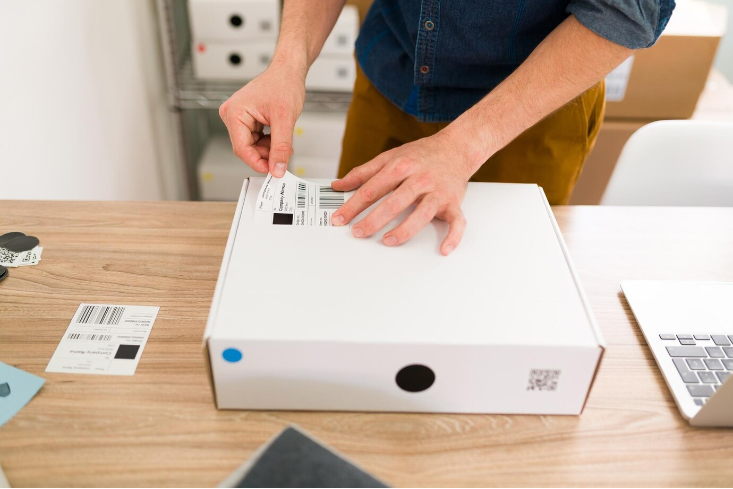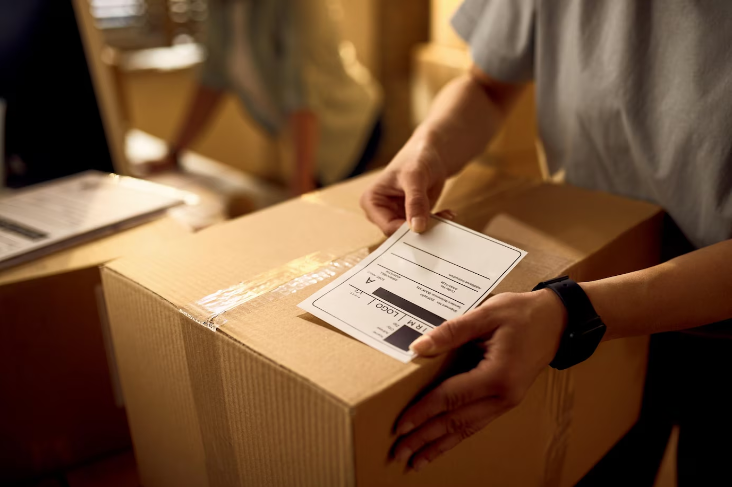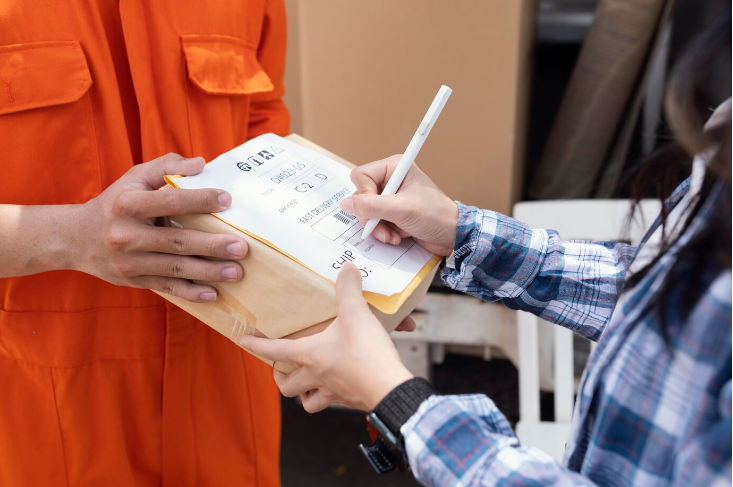Table of Contents
Shipping Labels: What It Is & How It Works
Time: Aug 30,2024 Author: SFC Source: www.sendfromchina.com
Shipping labels are more than just stickers on packages—they are a crucial part of the logistics process, ensuring that goods are delivered accurately and efficiently. Are you familiar with shipping labels and how they impact the shipping process? If not, you're in the right place. Shipping labels are crucial for ensuring that packages reach their destination without a hitch. They provide all the necessary information carriers need to sort, track, and deliver your goods efficiently.
In this guide, we'll cover the ins and outs of shipping labels, including what they are, their various types, and how to create them to streamline your shipping operations.

1. What Is a Shipping Label
A shipping label is a piece of paper or sticker attached to a package that contains all the information necessary for its delivery. Think of it as the ID card for your parcel, providing key details like the destination address, return address, shipping method, and tracking number. Shipping labels are generated by carriers or shipping companies like UPS, FedEx, DHL, and USPS to ensure that packages are routed correctly from sender to recipient.
2. How Do Shipping Labels Work
Shipping labels function as a navigational tool within the complex web of the global shipping network. Typically, shipping labels contain various fields, each playing a specific role in ensuring a parcel reaches its intended recipient.

(picture from Walmart)
1. Sender Address
2. Recipient Address
3. Post Service
4. Barcode
5. Tracking Number
6. Custom Info
3. Types of Shipping Labels

Shipping labels are not a one-size-fits-all solution. Different types of labels cater to different shipping needs and scenarios. Below, we delve into the primary types of shipping labels:
3.1 Standard Shipping Labels
Standard shipping labels are the most commonly used labels, suitable for both domestic and commercial deliveries. They typically include the recipient's name, address, weight of the package, a tracking barcode, and other relevant information needed for a straightforward delivery.
3.2 Return Shipping Labels
Return shipping labels are provided by businesses to customers, enabling easy returns. These labels include the return address, original shipping barcode, and a secondary tracking barcode to monitor the return process. Return labels simplify reverse logistics and enhance customer satisfaction by making the return process seamless.
3.3 International Shipping Labels
International shipping labels are more complex due to the additional information required for customs clearance. These labels must include country-specific details, such as customs declarations, harmonized system (HS) codes, and descriptions of the contents. International labels are crucial for avoiding customs delays and ensuring compliance with international shipping regulations.
3.4 Barcode Labels
While technically not a separate type of shipping label, barcode labels are worth mentioning due to their role in the shipping process. Barcodes are machine-readable codes that carry critical information, such as tracking numbers and package data. They allow automated sorting and tracking throughout the shipping journey.
4. Why Shipping Labels Matter

Shipping labels are vital for several reasons, making them an indispensable part of the shipping process:
1. Efficiency and Accuracy: Shipping labels streamline the sorting process, enabling quick and accurate handling of packages at every stage, from the warehouse to the delivery vehicle.
2. Tracking and Accountability: With unique tracking numbers embedded in barcodes, shipping labels provide real-time visibility into the package's location. This tracking ability enhances accountability and customer satisfaction.
3. Regulatory Compliance: For international shipments, proper labeling ensures compliance with various customs regulations, avoiding delays and potential fines.
4. Branding Opportunities: Customized shipping labels featuring a company's logo or marketing message serve as an additional branding touchpoint, enhancing brand visibility during the shipping journey.
5. Cost Management: Accurate shipping labels help prevent mistakes that could lead to packages being sent to the wrong address, thus avoiding costly returns and reshipping.
5. How to Create a Shipping Label

Creating a shipping label is a straightforward process that can be accomplished through various methods. Let’s explore the most common ways to create shipping labels:
Using Online Shipping Platforms
Many e-commerce platforms and shipping software solutions offer integrated shipping label creation tools. Services like Shopify, WooCommerce, and Amazon allow sellers to generate shipping labels directly from their order management systems. Here’s how to do it:
Step 1: Log in to your online store’s backend.Step 2: Go to the order management or fulfillment section.
Step 3: Select the order for which you want to create a shipping label.
Step 4: Enter shipping details such as weight, dimensions, and shipping method.
Step 5: Generate and print the label.
Direct from Carriers
You can also create shipping labels directly through carrier websites like USPS, FedEx, DHL, or UPS. Most carriers provide online tools that allow you to input shipping details, calculate shipping costs, and print labels from your home or office. Here’s a typical process:
Step 1: Visit the carrier's website and log into your account.Step 2: Go to the "Create Shipment" or equivalent section.
Step 3: Enter all required details, including the recipient's address, package weight, and dimensions.
Step 4: Choose your preferred shipping service and add any additional options (e.g., insurance, signature confirmation).
Step 5: Review the details, pay for the shipping cost, and print the label.
Printing Shipping Labels
Once you’ve created a shipping label, the next step is to print it. While you can use any standard printer for printing, specialized thermal label printers are often preferred for their efficiency and quality. Here’s how to print your labels:
Standard Printers: Print the label on regular paper, cut it out, and attach it securely to the package using clear packing tape.Thermal Printers: These printers use heat to print on special label rolls, producing durable, smudge-free labels ideal for shipping.
6. FAQs
1. What information is required on a shipping label?
A shipping label typically requires the recipient's name, address, the sender's address, the package's weight, a tracking barcode, and sometimes a description of the package contents. For international shipments, additional details like customs information and HS codes may be needed.
2. Can I create a shipping label without printing it immediately?
Yes, most online shipping platforms and carrier websites allow you to create and save shipping labels without printing them immediately. You can access these saved labels later and print them at your convenience.
3. How do I print a return shipping label?
To print a return shipping label, go to your carrier's website or the e-commerce platform used for the purchase. Navigate to the returns or shipping section, enter the necessary details, and select "print return label."
4. Are there any shipping label size requirements?
Yes, shipping label sizes can vary depending on the carrier. However, the most common sizes are 4x6 inches and 8.5x11 inches. Ensure your printer settings match the label size for optimal printing.
5. What should I do if my shipping label is damaged or unreadable?
If a shipping label becomes damaged or unreadable, it's crucial to print a new label as soon as possible. An unreadable label could delay the shipping process or cause the package to be returned to the sender.
 Post Views:3808
Post Views:3808
Copyright statement: The copyright of this article belongs to the original author. Please indicate the source for reprinting.
Previous Post
How to Prevent and Fix Inventory Errors: The Ultimate Guide
Next Post
TAGS
Hot Research
Recent News
Get a Custom China Fulfillment Solution with FREE Storage for 30 Days
 Want to know about our services, fees or receive a custom quote?
Want to know about our services, fees or receive a custom quote?
 Please fill out the form on the right and we will get back to you within a business day.
Please fill out the form on the right and we will get back to you within a business day.
 The more information you provide, the better our initial response
will be.
The more information you provide, the better our initial response
will be.





 TAGS:
TAGS: